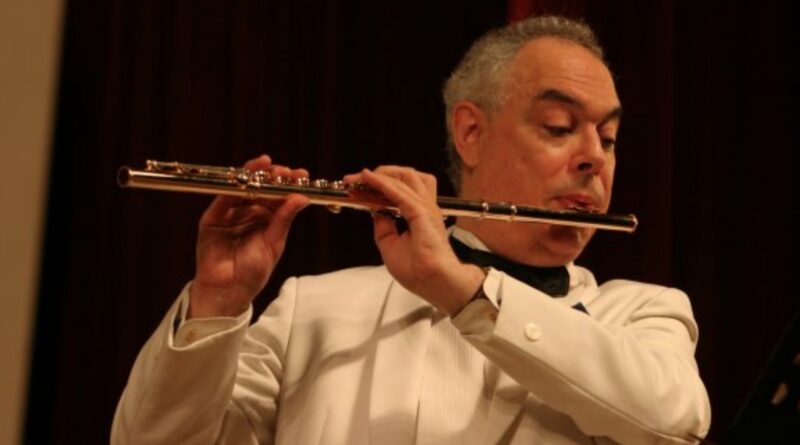Selecting Your Next Flute
by Alan Weiss
Alan Weiss is acclaimed flutist with diverse high-level experience as an orchestra musician, chamber musician, solo performer, university professor, university and music festival administrator, music business, and recording artist. He is currently the co-owner of www.VintageFluteShop.com. Please also visit www.alanweissflute.com.
There comes a time in every flutist’s life when they will desire a different flute. Young players will want an instrument to help them improve from their beginner and intermediate level instrument. Professionals seek out diverse and more refined sounds. Lovers of the flute may finally be ready to acquire the flute they have been dreaming about for years. Yet there are so many varities from brand, style, vintage, new, and pricing that the choice becomes more difficult than it needs to be.
There was a time that the only way to experience a new flute was to visit a flute factory showroom or band store. Today there are a select number of flute speciality dealers located worldwide. This affords the flutist the opportunity of visiting one venue to compare samples of flutes both new and pre-owned instruments.
There are 4 basic choices:
- New professional flutes in silver, gold, platinum
- New student flutes, silver or plated
- Pre-owned flutes (a fancy way to say “used flutes”…)
- Vintage flutes
New flutes are the most expensive and a few of the companies will actually be pleased to customize a flute and headjoint for your playing and physical needs. The professional models are created utilizing the most labor with the most options and customizations. Each precious metal or combinations has its unique tonal and response properties.
Ultimately, a better flute alone doesn’t guarantee improvement, but allows you an opportunity for musical growth. A flute should complement your musical voice and style.
A number of the factories sell new student models imported from Asia with their company name engraved upon them. For the same price, you should also compare these mass-produced student and step-up flutes to a fine vintage professional flute.
A vintage professional flute (a flute made between 1918-1980) is an excellent alternative to a new student flute. It may play just as well as a new flute with great cost savings. They generally these flutes have a good A=440 Hz scale which is perfectly useable today. The main difference for flutes made before 1980 is the traditional style headjoint. The vintage flute option is also a good choice for those who wish to experience the traditional sound and feel of older flutes.
It is important to consider a logical and intelligent flute testing process. If you are a young student, take the advice of your teacher. For the more mature flutist, you will need to make your own decision. The best flute for you is not always the costliest. Some flutists sound great on a gold instrument, while others sound better on silver.
Use your ear and own judgment. Take your time. (I am the exception as I have purchased great professional flutes and headjoints in minutes which have served me well.) If you can bring along another musician (it doesn’t have to be a flutist) have them listen to your playing for:
- Sound quality- listen for a good core sound in all dynamics and nuances with many timbres.
- Projection- do not just play test in a small live showroom. Test the flute in familiar surroundings (eg., practice room, concert or recital halls) and make sure your sound projects to the back of the hall.
- Play pieces and/or orchestral excerpts which you know extremely well.
- Test the flute with both soft and loud playing, different musical styles, legato, and a variety of articulation.
- Trust your first instincts. If you like the flute right away keep trying it. Don’t expect it to be 100%. But if you feel it plays 95% of what you have in your mind, the next step is to try a few headjoints (if the flute is new). Conversely if you don’t like the flute immediately, reject it right away. Don’t let anyone convince you that if you buy a flute you don’t really like that you will grow into it or be comfortable.
- Do not blast and overblow or test flutes by playing the very high C, C#, and D. This will tell you nothing and only annoy the people around you!
- When testing a vintage or pre-owned modern flute, remember each of these gems is one-of-a-kind.
- Most flute shops and companies will allow a trial for a few days. Do not take a suitcase of different flutes and headjoints as you will only get confused. Narrow it down to one modern flute, an extra headjoint, and one vintage flute. This way you can take your time and consider the different options.
If you are unhappy with your present flute, most likely any acquisition will be an improvement for you. Do not let sales people pressure you or manipulate you to buying something that is more expensive than you can afford which doesn’t suit your musical needs.
I suggest you take 6-9 months to research all the various flute models, options, and prices. The search for your next flute can be quite fun!
